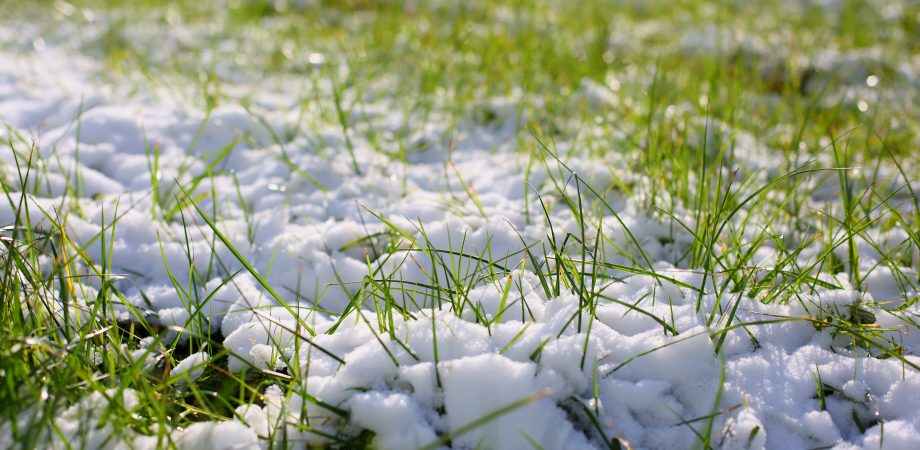How to Help Turf Recover From Winter

March brings hope for spring, along with questions about how to help turf recover from winter. Here are a few cultural practices to ensure a smooth transition from one season to the next.
If you manage turf in a region that received a lot of snow, you’ll likely deal with crown hydration as a result. Grass thaws and refreezes as temperatures fluctuate in the late winter and early spring. The process dehydrates the plant, causing brown spots and sometimes even dead grass. Spring aeration and fertilization will help turf recover from crown hydration, or “freeze injury.”
As the snow melts, you may discover an unwelcome guest on your turf. Gray and pink snow mold grow under snow and form patches ranging from inches to several feet. The good news is that snow mold doesn’t kill the plant’s roots, just its leaves. Dethatching will remove the dead leaves in the spring. Fertilize and water the turf to help it regrow and recover from snow mold.
Another pest that may have invaded your turf over the winter is voles. You can tell they’ve moved in if there are winding lines of dead grass on the surface of the turf. Voles tunnel in the soil and kill grass from underneath by eating its roots. Humane traps are the best solution to a vole problem. While poison bait is another option, it can be dangerous for pets and other animals.
Whatever problems you discover as the snow melts, now you’re prepared to help your turf recover and grow strong this spring. Contact your sales representative if you have questions or want to learn about chemical options to help with spring recovery.







